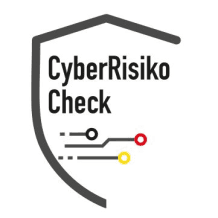What is Malware?
Malware stands for 'malicious software' and refers to any type of harmful software aimed at damaging or infiltrating systems. These programs can infiltrate computers, networks, and devices to steal data, disrupt functions, or take control.
Types of Malware
There are various types of malware, each with specific functions and goals:
- Viruses: Spread by attaching to legitimate programs and replicate themselves.
- Worms: Spread independently within networks without a host program.
- Trojan horses: Disguise themselves as legitimate software and open backdoors for attackers.
- Ransomware: Locks access to systems or files until a ransom is paid.
- Spyware: Spies on user activities and collects sensitive information.
- Adware: Displays unsolicited advertisements and can track user behavior.
How Does Malware Work?
Malware typically enters devices through phishing emails, infected attachments, malicious downloads, or through security vulnerabilities in software. Once it has infiltrated a system, it can carry out various harmful actions such as data exfiltration, user spying, or system control.
Common Malware Vulnerabilities
❌ Weak passwords and security configurations
❌ Unpatched or outdated software
❌ Unsafe browsing and questionable downloads
❌ Social engineering and phishing techniques
Protective Measures Against Malware
To protect against malware, businesses and individuals should implement a multi-layered security strategy:
Regular Software Updates
✔ Keep your operating system and all applications up to date to close security gaps.
Strong Passwords and Multi-Factor Authentication
✔ Use complex passwords and implement multi-factor authentication where possible.
Antivirus and Anti-Malware Software
✔ Rely on reputable security software to detect and eliminate malware.
Security Awareness and Training
✔ Train users to recognize phishing attempts and social engineering techniques.
Regular Backups
✔ Conduct regular backups of important data to restore your information in the event of a malware attack.
Development and Trends
Malware is constantly evolving, with increasingly sophisticated techniques that bypass hindered firewalls and antivirus systems. Attackers are increasingly leveraging AI and machine learning to automate attacks and create targeted threats.
Conclusion
Comprehensive protection against malware requires a combination of prevention, detection, and response. Implementing a robust security culture, supported by the right technology, is crucial to safeguarding against these threats and securing your digital assets.
🔒 Test your systems for malware vulnerabilities: Check now
📌 Related terms: viruses, Trojan horses, ransomware, cybersecurity
Malware in Germany: Current Developments
The significance of malware in Germany is continuously growing. According to recent studies by the Federal Office for Information Security (BSI), German companies are increasingly affected by cyber threats. The Bitkom association reports that 84% of German companies were victims of cyberattacks in the last two years.
Particularly in the area of malware, the following trends are noticeable:
Increasing investments in preventive security measures
Heightened awareness for holistic security concepts
Integration of malware into existing compliance frameworks
EU Compliance and Malware
With the introduction of the NIS2 directive and tightened GDPR requirements, German companies must adjust their security strategies. Malware plays a central role in fulfilling regulatory requirements.
Key compliance aspects:
Documentation of security measures
Regular review and updates
Proof of effectiveness to regulatory authorities
Practical Implementation in Corporate Daily Life
The integration of malware into everyday business requires a structured approach. Experience shows that companies benefit from a phased implementation that considers both technical and organizational aspects.
Think of malware as insurance for your business: The better prepared you are, the lower the risk of damage from security incidents.
Additional Security Measures
For a comprehensive security strategy, you should combine malware with other security measures:
Vulnerability Management - Systematic vulnerability management
Penetration Testing - Comprehensive security testing
Security Hardening - Employee awareness
Incident Response Plan - Preparation for security incidents
Conclusion and Next Steps
Malware is an essential component of modern cybersecurity. Investing in professional malware measures pays off in the long term through increased safety and compliance.
Want to optimize your security strategy? Our experts are happy to assist you in implementing malware and other security measures. Contact us for a non-binding initial consultation.
🔒 Act now: Have our experts assess your current security situation
📞 Request consultation: Schedule a free initial consultation on malware
📋 Compliance Check: Review your current compliance situation
📌 Related Topics: Cybersecurity, IT security, Compliance Management, Risk Assessment
Best Practices for Malware
The successful implementation of malware requires a systematic approach. Based on our long-standing experience in cybersecurity consulting, the following best practices have proven effective:
Strategic Planning
A well-thought-out strategy is the foundation for successful malware. Consider the following aspects:
Define clear objectives and success measurement
Involve stakeholders early and establish responsibilities
Calculate realistic timelines and budgets
Conduct risk assessment and contingency planning
Technical Implementation
The technical implementation of malware should occur in phases:
Analysis of Current Situation: Assessment of existing security measures
Gap Analysis: Identification of areas for improvement
Pilot Project: Test run in a limited area
Rollout: Gradual expansion to the entire company
Monitoring: Continuous monitoring and optimization
Common Challenges and Solutions
Similar challenges regularly arise during the implementation of malware. Here are proven solutions:
Resistance to Change
Employees are often skeptical of new security measures. Successful change management strategies include:
Transparent communication about benefits and necessity
Training and continuing education measures
Involvement of opinion leaders as multipliers
Gradual introduction with quick wins
Budget Constraints
Limited resources require a prioritized approach:
ROI calculation for various measures
Phased implementation according to priorities
Utilization of synergies with existing systems
Consideration of compliance requirements
Success Measurement and KPIs
The success of malware measures should be measurable. Relevant metrics include:
Quantitative Metrics
Number of identified and resolved vulnerabilities
Reduction in average response time to security incidents
Improvement of compliance ratings
ROI of implemented security measures
Qualitative Assessments
Employee satisfaction and acceptance
Feedback from customers and partners
Assessment by external auditors
Reputation and trust in the market
Future Trends and Developments
The landscape of cybersecurity is continuously evolving. Current trends influencing malware include:
Artificial Intelligence: AI-powered threat detection and defense
Zero Trust Architecture: Trust is not assumed but continuously verified
Cloud Security: Adaptation to hybrid and multi-cloud environments
IoT Security: Protection of connected devices and systems
Quantum Computing: Preparation for post-quantum cryptographic methods
Companies that invest in malware today are optimally positioned for future challenges and opportunities.
Your Next Step
The implementation of malware is an investment in the future of your business. Our experts will assist you in developing a tailored solution that meets your specific requirements.
Start today:
📞 Free Consultation: Schedule a no-obligation conversation
📋 Security Assessment: Have your current security situation evaluated
🎯 Customized Solution: Development of an individual malware strategy
🚀 Implementation: Professional execution with ongoing support
Contact us today and take the first step towards a safer digital future.




